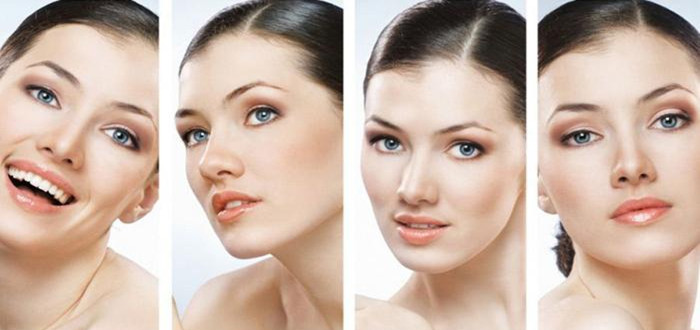The moisture content of the litter in the core fermentation layer is generally controlled at about 50-60% (judgement basis, see the instructions, that is, grab a handful of materials by hand, wet printing, but not dripping), which is the physiology of functional microbial fermentation and reproduction As determined by the requirements, the fastest microbial reproduction is best within this water content range. But the surface layer of about 10 feet is different. This layer of 10 or so layers is generally not fermented or the fermentation intensity is very low. Actually, it mainly acts as a "protective layer or buffer layer" for the whole fermentation bed, just like The "big quilt" covered in the fermented bed is due to the "wind and rain" of this large quilt. With its cushioning and protective function, the function of the fermentation bed can be fully realized. When environmental conditions such as outside temperature, humidity, and even pH change drastically and violently, due to the buffer protection of the "large quilt", microbial fermentation in the fermentation bed, decomposition, degradation, transformation, and accumulation of temperature and heat "business" As usual, it is basically not affected. On the contrary, when for some reason, for example, the imbalance of nutrient distribution inside the deep material excrement and uneven distribution of fermentation aids, resulting in a large difference in local fermentation intensity, due to the external "big quilt" buffer and retardation, it will not Let the pig feel that some places are too hot and have a warm feeling. Some places are too cold and have a “cool foot†feeling. In this way, the temperature of the whole fermentation bed is basically the same, and the pig’s body is protected to the maximum extent. .
Therefore, the humidity (water content) of the 10 layers of the surface layer of the pad layer is different from that of the internal deep pad material. The moisture content of the surface layer is generally lower than that of the inner layer and is about 30-40% (on the hand Dry, without a wet sensation), the minimum moisture content does not affect the respiration rate of the pig without taking off dust or dust, generally the amount of water spray on the sawdust bedding; and the maximum moisture content does not have a significant sense of humidity, so as not to Let the pigs have a cool feeling of dampness.
Hyaluronic Acid For Skin, Sodium Hyaluronate is well known as the best [Natural Moisturizing Factor". For Hyaluronic Acid Cream . In the early 1980s, the excellent moisturizing function of Sodium Hyaluronate has been widely concerned by international cosmetics industry. With its unique film-forming and hydrating characteristics, Hyaluronic Acid Powder Cosmetic Grade is used as a highly effective humectants in cosmetics. It attracts moisture to the skin and hold moisture in the skin, which preserve skin smoothness, suppleness and elasticity. 1 gram of Hyaluronic Acid Powder Cosmetic Grade is able to retain up to 1000 gram of water. So it is regarded as the [key to the fountain of youth".
The effects are as follows:
(1) Moisturizing effect
Moisturizing is the most important effect of Sodium Hyaluronate in cosmetics products. It can be hydrated shell
in skin surface and make the corneum hydration and softening. Compared with
other humectants, Sodium Hyaluronate is less effected by the environment as it
has the highest hygroscopic capacity in a relatively low humidity (e.g., in a
dry winter), but has the lowest hygroscopic capacity in a relatively high
humidity (e.g., in a damp summer). This unique property of Sodium Hyaluronate
makes the skin adapt to different seasons.
(2) Skin nutrition effect
Sodium Hyaluronate is the inherent biological materials of skin. The exogenous
Sodium Hyaluronate can complement the endogenous Sodium Hyaluronate. Low molecular Sodium Hyaluronate can
penetrate into dermis directly to improve the nutrient supply.
(3) Skin repair effect
There is some evidence that topically applied Sodium Hyaluronate can reduce
skin irritation
from various causes. During clinical trials it was also shown that this
ingredient is effective in promoting healing and fighting inflammatory
conditions of the skin. Sodium Hyaluronate serves as a free radical scavenger
and antioxidant, helping to protect the skin from the aging effects of
excessive sunlight exposure.
(4) Emollient and Film-forming
Sodium Hyaluronate is high polymer with high lubrication and film-forming.
Sodium Hyaluronate contained in cosmetics creates protective film on the
surface of skin, which retains moisture, and at the same time prevents moisture
in the skin from evaporation, so that improves freshness of the skin.
(5) Thickening
Sodium Hyaluronate solution have
high viscosity, and 1% solution is gelatinous. It can be added to cosmetics to
improve the thickening and stability.

Specification
|
Test Items |
Standard |
|
Appearance |
White powder |
|
Hyaluronic Acid |
≥95% |
|
Molecular weight |
800Kda-2000Kda |
|
PH |
6.5-8.0 |
|
Solution transmittance |
≥99.0% |
|
Loss on drying |
<10% |
|
Protein |
≤0.05% |
|
Dynamie viscosity |
Measuned value |
|
Heavy metal |
<20ppm |
|
Bacterial counts |
<100cfu/g |
|
Mold and Yeast |
<10cfu/g |
|
Staphylococcus aureus |
Can not be checkout |
|
Chlorop seu domonas |
Can not be checkout |
|
Shelf Life |
Two Years |
|
Conclusion |
The results meet the USP standard |
Cosmetic Grade Hyaluronic Acid Powder
Hyaluronic Acid For Skin,Hyaluronic Acid Cream,Pure Cosmetic Grade Hyaluronic Acid,Hyaluronic Acid Powder Cosmetic Grade
Qufu Hi-Tech Trading Co., Ltd. , https://www.chinahyaluronic-acid.com